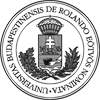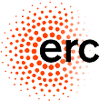
Welcome to the COLLMOT project site! ¶
COLLMOT is a five-year EU ERC project on the complex structure and dynamics of collective motion. The project is coordinated by Prof. Tamás Vicsek at the Department of Biological Physics, Institute of Physics, Eötvös Loránd University, Budapest, Hungary.
Motivation ¶
 Collective behaviour is a widespread phenomenon in nature and technology making it a very important subject to study in various contexts. The main goal we intend to achieve in our multidisciplinary research is the identification and documentation of new unifying principles describing the essential aspects of collective motion, being one of the most relevant and spectacular manifestations of collective behaviour.
Collective behaviour is a widespread phenomenon in nature and technology making it a very important subject to study in various contexts. The main goal we intend to achieve in our multidisciplinary research is the identification and documentation of new unifying principles describing the essential aspects of collective motion, being one of the most relevant and spectacular manifestations of collective behaviour.
 To do so we shall carry out novel type of experiments, design models that are both simple and realistic enough to reproduce the observations and develop concepts for a better interpretation of the complexity of systems consisting of many organisms as well as such non-living objects as interacting robots.
To do so we shall carry out novel type of experiments, design models that are both simple and realistic enough to reproduce the observations and develop concepts for a better interpretation of the complexity of systems consisting of many organisms as well as such non-living objects as interacting robots.
 We plan to study systems ranging from cultures of migrating tissue cells through flocks of birds to collectively moving devices. The interrelation of these systems will be considered in order to deepen the understanding of the main patterns of group motion in both living and non-living systems by learning about the similar phenomena in the two domains of nature. As an example, we plan to understand the essential ingredients of flocking of birds by building collectively moving unmanned aerial vehicles while, in turn, high resolution spatiotemporal GPS data of pigeon flocks will be used to make helpful conclusions for the best designs for swarms of robots.
We plan to study systems ranging from cultures of migrating tissue cells through flocks of birds to collectively moving devices. The interrelation of these systems will be considered in order to deepen the understanding of the main patterns of group motion in both living and non-living systems by learning about the similar phenomena in the two domains of nature. As an example, we plan to understand the essential ingredients of flocking of birds by building collectively moving unmanned aerial vehicles while, in turn, high resolution spatiotemporal GPS data of pigeon flocks will be used to make helpful conclusions for the best designs for swarms of robots.
 In particular, we shall construct and build a set of vehicles that will be capable, for the first time, to exhibit flocking behaviour in the three-dimensional space. In general, the methods we shall adopt will range from approaches used in statistical physics and network theory to various new techniques in cell biology and collective robotics. All this will be based on numerous prior results (both ours and others) published in leading interdisciplinary journals. The planned research will have the potential of leading to ground breaking results with significant implications in various fields of science and technology.
In particular, we shall construct and build a set of vehicles that will be capable, for the first time, to exhibit flocking behaviour in the three-dimensional space. In general, the methods we shall adopt will range from approaches used in statistical physics and network theory to various new techniques in cell biology and collective robotics. All this will be based on numerous prior results (both ours and others) published in leading interdisciplinary journals. The planned research will have the potential of leading to ground breaking results with significant implications in various fields of science and technology.
For further details please visit the project pages.
Most recent publications
- (2015) Modeling the emergence of modular leadership hierarchy during the collective motion of herds made of harems J. Stat. Phys. 158
- (2015) Kutyák és kütyük, avagy a viselkedés megfigyelésének automatizálása Magyar Tudomány 1
- (2014) Flocking algorithm for autonomous flying robots Bioinspiration & Biomimetics 9
Selected publications
- (2010) Hierarchical group dynamics in pigeon flocks Nature 464
- (2010) Multifractal network generator PROCEEDINGS OF THE NATIONAL ACADEMY OF SCIENCES OF THE UNITED STATES OF AMERICA 107
Co-authorship network






